Increase protected lands
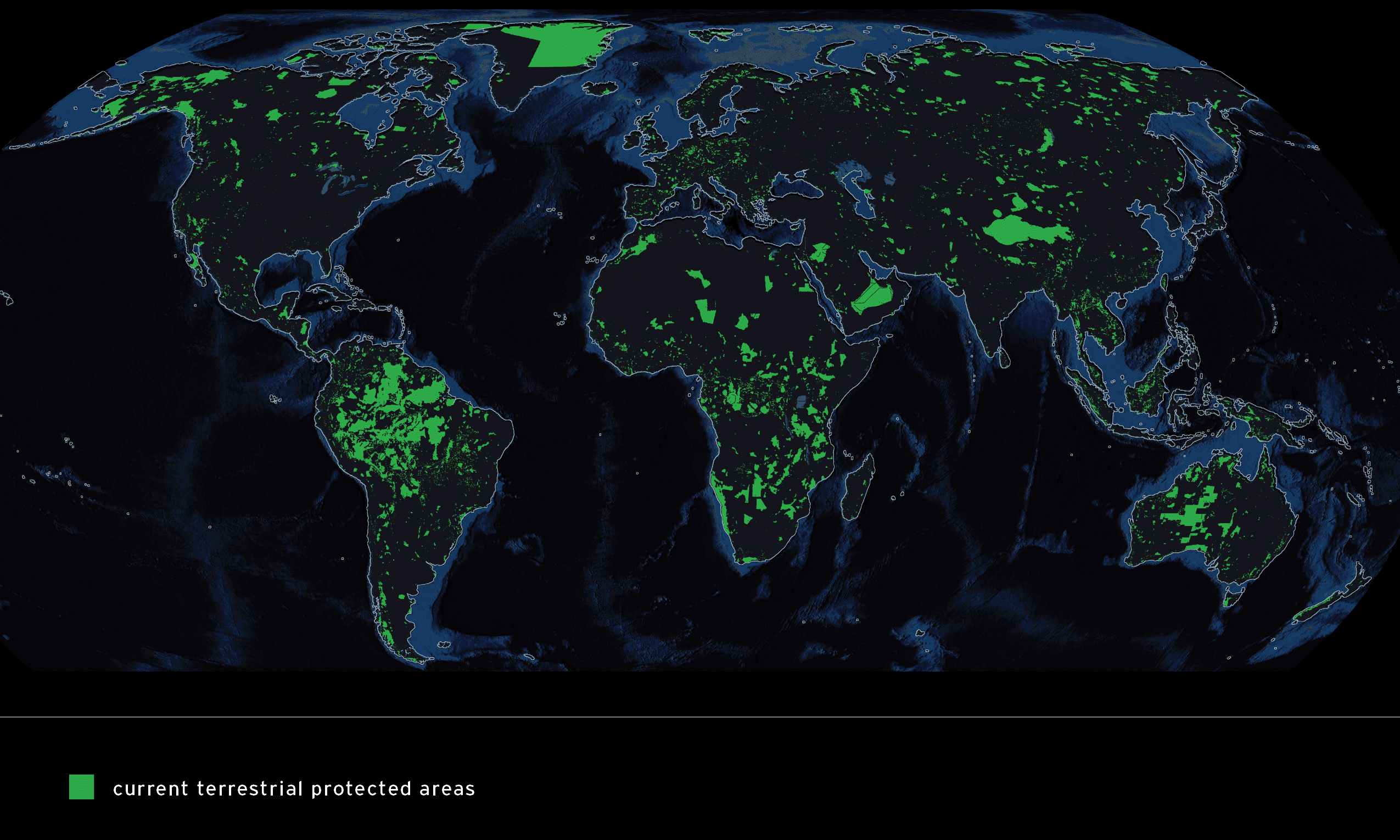
"PROTECTED AREAS ARE THE CORNERSTONE OF BIODIVERSITY CONSERVATION."
"Before the industrial revolution, primary or old-growth habitats covered most of Earth’s 846 terrestrial ecoregions. Today, these primary habitats, as represented by unlogged forests, ungrazed deserts, ancient grasslands, and savannas—and in the marine realm, the untrawled seafloor and unfished seamounts—are now remnants... If we fail to change course, it will take millions of years for Earth to recover an equivalent spectrum of biodiversity. Future generations of people will live in a biologically impoverished world."
source: World Database of Protected Areas |E. Dinerstein et al. A Global Deal For Nature: Guiding principles, milestones, and targets. Sci. Adv. (2019).
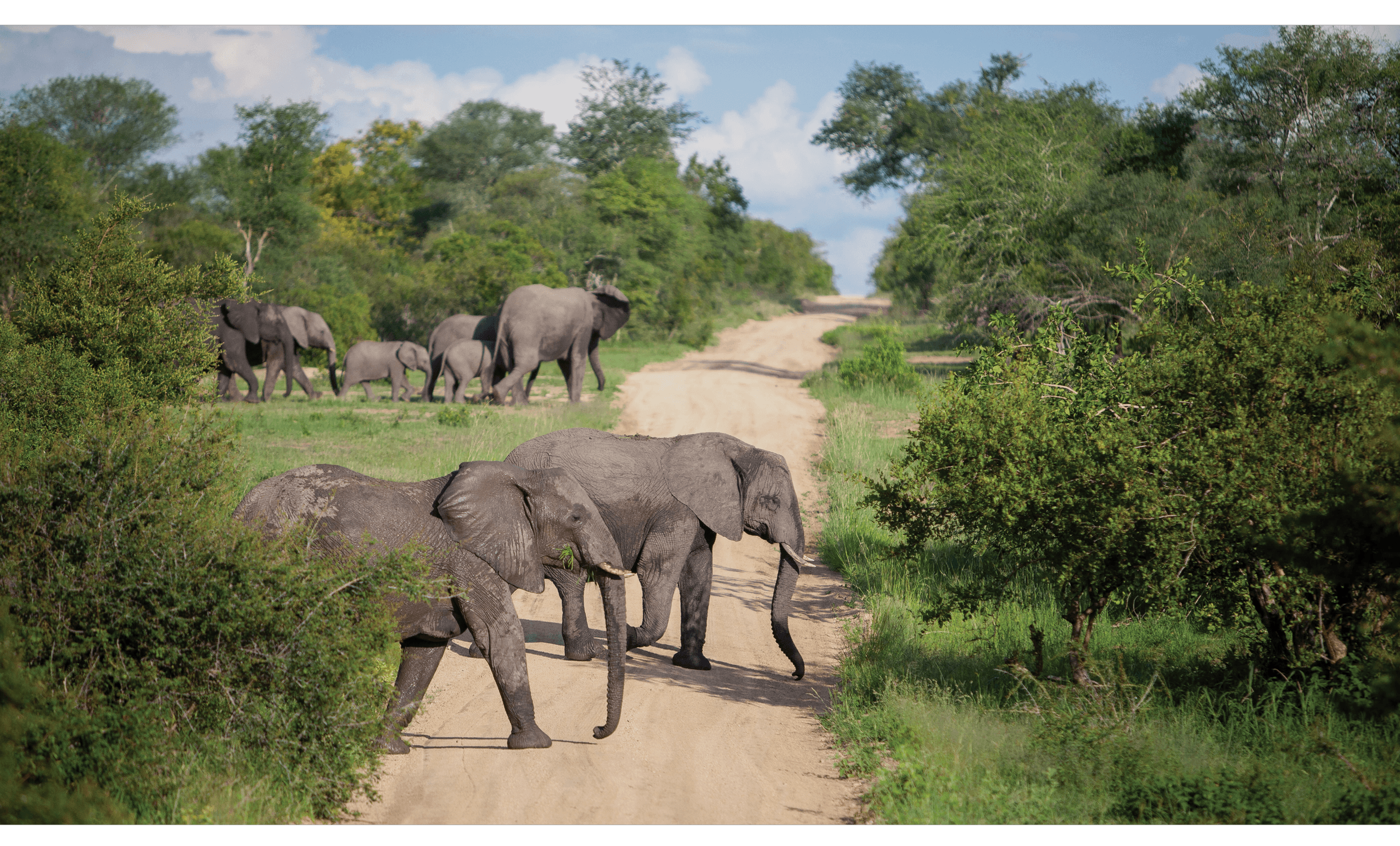
"THE MOST LOGICAL PATH TO AVOID THE APPROACHING CRISIS IS MAINTAINING AND RESTORING AT LEAST 50% OF THE EARTH'S LAND AREA AS INTACT NATURAL ECOSYSTEMS."
Half Earth by 2030

source: World Database of Protected Areas |A “Global Safety Net” to reverse biodiversity loss and stabilize Earth’s climate. Fig. 1 Areas of the terrestrial realm where increased conservation action is needed to protect biodiversity and store carbon.
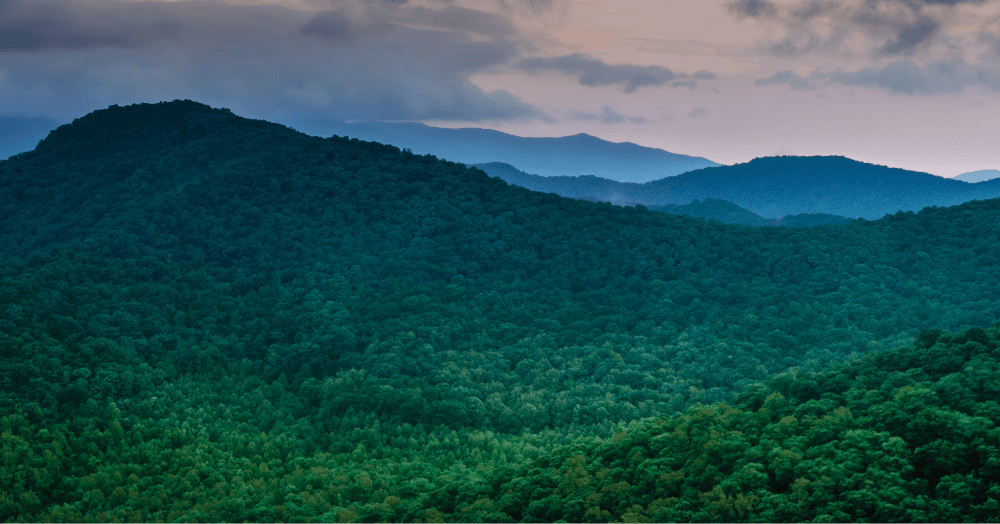
FORESTS
"BECAUSE ABOUT 2/3 OF ALL SPECIES ON EARTH ARE FOUND IN NATURAL FORESTS, MAINTAINING INTACT FORESTS IS VITAL TO PREVENT MASS EXTINCTION."
“It is no coincidence that some of the most carbon-rich ecosystems on land - natural forests - also harbor high levels of biodiversity... it is the very pests, pathogens, pollinators, decomposers, and predators that comprise a tropical forest that [generate] the carbon-rich growth forms (in both wood and soil) that take the carbon out of the atmosphere.”
Historic Forest Conversion
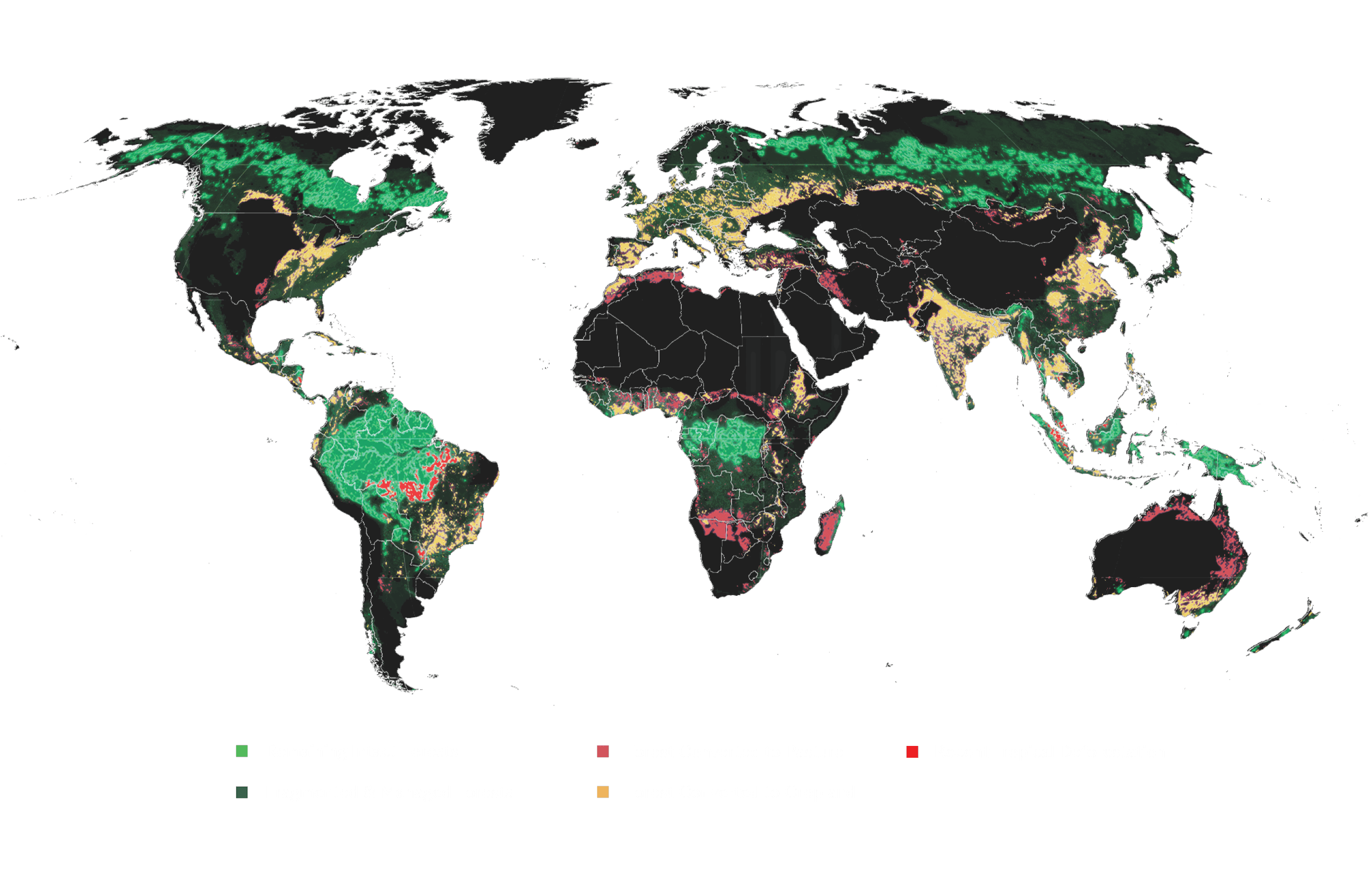
80% OF INTACT OLD-GROWTH FORESTS HAVE DISAPPEARED, AND ONLY 17% OF CURRENT FORESTS ARE PROTECTED.
Source: “The Last Frontier Forests” World Resource Institute 1997; “The Last Frontiers of Wilderness...” Potapov et al. 2017
WHAT YOU CAN DO
Buy sustainably harvested or reclaimed wood and recycled or FSC certified paper products to help prevent deforestation.
Advocate for Forest Conservation, Restoration, an Protected Areas Worldwide
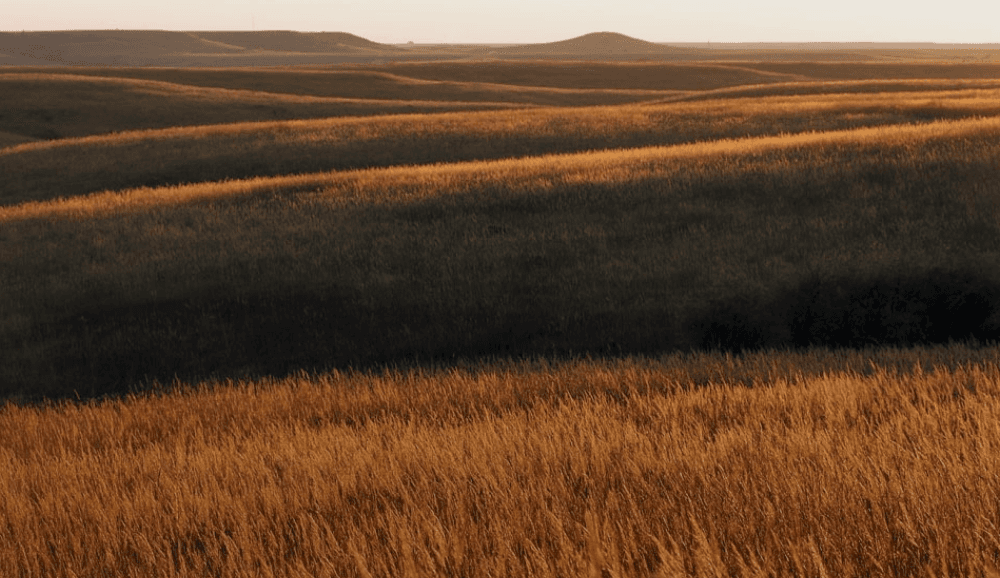
GRASSLANDS
"GRASSLANDS WERE ONCE HOME TO SOME OF THE LARGEST ASSEMBLAGES OF WILDLIFE THE EARTH HAS EVER KNOWN..."
“Today [grasslands] are considered the most altered terrestrial ecosystem on the planet and... the most endangered ecosystem on most continents. [Only 14%] of this vast area is protected, not enough to guarantee the survival of the herds of wild ungulates that depend on them, or provide essential ecosystem services such as carbon sequestration, and soil erosion control.”
IUCN Special Commission on Protected Areas. https://www.iucn.org/commissions/world-commission-protected-areas/our-work/temperate-grasslands. Image Source: Tallgrass Prairie, USFWS.
Historic Grasslands
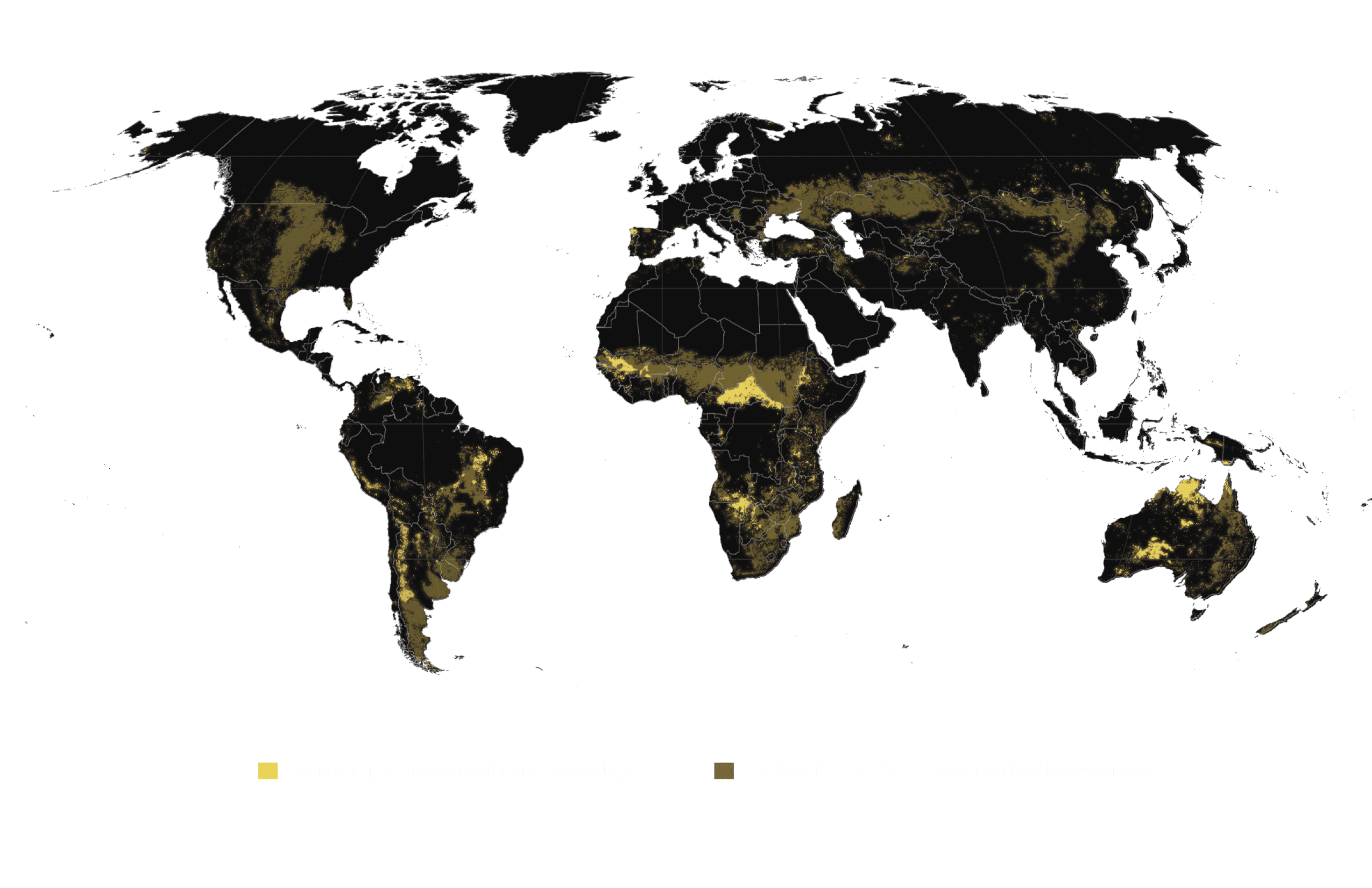
50% OF SAVANNAS AND 70% OF GRASSLANDS HAVE BEEN CONVERTED TO CROPLANDS AND PASTURE.
Only 15% of tropical grasslands and savannas are protected. And only 4.5% of temperate grasslands are protected, making them the most endangered biome on earth.
historic grassland conversion ranges from sparsely managed grazing lands to heavily cultivated croplands. “remaining grasslands” shown are the few grassland ecosystems not dominated by pasture or crop cultivation. Source: Global Agricultural Lands in the Year 200, Ramankutty et al. 200;. Atlas of the Biosphere, Potential Vegetation From Ramankutty and Foley 1999; SEDAC, croplands and pasture in the year 2000.
WHAT YOU CAN DO:
Support the efforts of conservation groups protecting grasslands worldwide.
Promote native plant and wildlife diversity by invasive tree control, prescribed burning, and improved livestock management.
Support Organic and Regenerative Agriculture
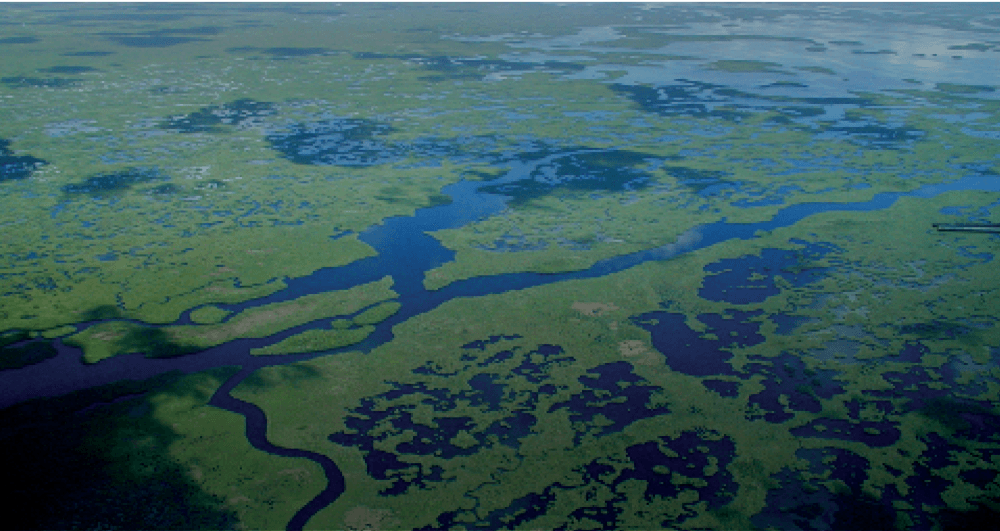
WETLANDS
"BLUE CARBON HABITATS MAY STAND ALONE AS THE MOST EFFICIENT BIOLOGICAL RESERVOIRS OF STORED CARBON ON EARTH."
“Coastal ecosystems are some of the most productive on Earth... [offering] coastal protection from storms and nursery grounds for fish... and sequestering and storing “blue” carbon from the atmosphere and oceans... [they] are an essential piece of the solution to global climate change.”
-Ariana Sutton-Grier (Director of Science, Nature Conservancy) | “Study: Restoring Wetlands Could Help Fix Climate Change” Kevin Enochs, Voice of America, Feb. 01, 2017; “About Blue Carbon” the buecarboninitiative.org | image: Everglades, National Park Service
Global Wetlands
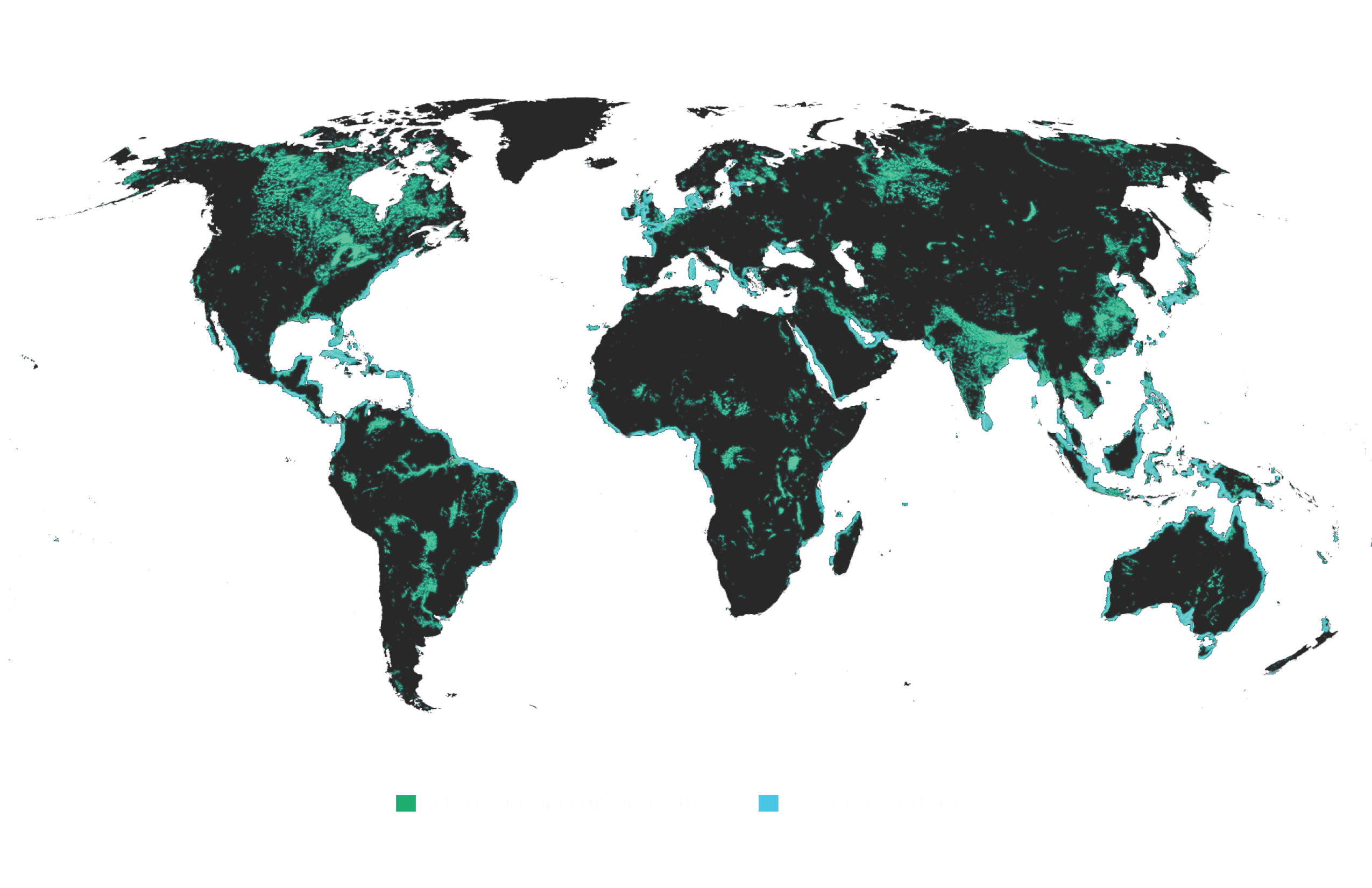
"OVER HALF THE WORLD'S WETLANDS HAVE DISAPPEARED SINCE 1900"
Coastal wetlands make up only 0.3% of earth’s land area, and only 26% are currently protected. Peatlands, which exist on every continent, cover 3% of the earth’s land, but only 2% are currently protected.
World WildLife Fund “Threats to Wetlands” | “Development of a global inundation map at high spatial resolution from topographic downscaling of coarse-scale remote sensing data” EtienneFluet-Chouinard. 2015.
Next solution



Learn about Maya Lin’s fifth and final memorial: a multi-platform science based artwork that presents an ecological history of our world - past, present, and future.

Discover ecological histories and stories of former abundance, loss, and recovery on the map of memory.

Learn how we can reduce our emissions and protect and restore species and habitats – around the world.

See how art can help us rethink the problems we face, and give us hope that each one of us can make a difference.

Help make a global memorial something personal and close to home. Share your stories of the natural world.